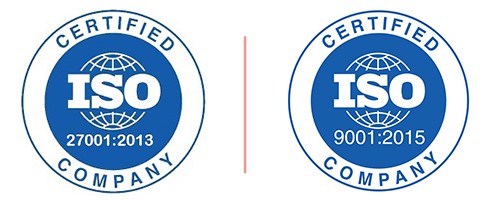- +81-5050505761
- [email protected]
The global intraoral scanners market size was US$ 450.8 million in 2021. The global intraoral scanners market size is forecast to reach US$ 1409.3 million by 2030, growing at a compound annual growth rate (CAGR) of 13.5% during the forecast period from 2022 to 2030.
In dentistry, intraoral scanners are digital devices that can capture direct optical impressions. They include a computer, handheld camera, and software. The scanner projects a light source to capture images of the soft tissues located inside the mouth. Among the many uses of intraoral scanners are scanning the teeth arch and preparing teeth and implant scan bodies. They are inserted into the patient's mouth and moved over the surface area of their teeth to capture images. Image sensors capture these images, and scan software processes them to generate a three-dimensional (3D) surface model. In addition, there are many benefits to intraoral scanners, including their accuracy, versatility, ease of use, quickness, minimal discomfort, and the removal of the need for traditional impressions or stone models.
Factors Influencing Market Growth
Impact Analysis of COVID-19
COVID-19 had a significant impact on the intraoral scanner market. Due to the social distancing actions and lockdown measures adopted by governments worldwide, dental clinics and hospitals saw a significant reduction in patient visits. Furthermore, the pandemic had a huge impact not only on the global economy but also on hospital-based general care for non-COVID-19 patients as well. Due to lockdowns, dental clinics and many hospitals were closed to patients who were not COVID eligible, which decreased the demand for intraoral scanners.
Regional Insights
The Asia Pacific is forecast to grow at the fastest rate in the intraoral scanners market. Due to the growing pool of patients suffering from dental disorders, the increase in the geriatric population, and improvements in healthcare facilities. Furthermore, technological advancements, such as standalone digital scanners, are forecast to propel market growth in the region.
North America accounts for the largest share of the market, with a high growth rate during the forecast period. Increasing geriatric populations, a high number of patients with dental problems, and advances in healthcare infrastructure are driving the growth in its revenue share. In addition, the growing awareness of advanced dental imaging techniques among orthodontists and improved patient compliance and comfort during scans will contribute to the growth of the region.
Leading Competitors
The leading prominent companies profiled in the global intraoral scanners market are:
Scope of the Report
The global intraoral scanners market segmentation focuses on Brand, End-User, and Region.
Segmentation based on Brand
Segmentation based on End-User
Segmentation based on Region
[TABLE OF CONTENTS]
1 INTRODUCTION OF GLOBAL INTRAORAL SCANNERS MARKET
1.1 OVERVIEW OF THE MARKET
1.2 SCOPE OF REPORT
1.3 ASSUMPTIONS
2 EXECUTIVE SUMMARY
3 RESEARCH METHODOLOGY
3.1 DATA MINING
3.2 VALIDATION
3.3 PRIMARY INTERVIEWS
3.4 LIST OF DATA SOURCES
4 GLOBAL INTRAORAL SCANNERS MARKET OUTLOOK
4.1 OVERVIEW
4.2 MARKET DYNAMICS
4.2.1 DRIVERS
4.2.2 RESTRAINTS
4.2.3 OPPORTUNITIES
4.3 PORTERS FIVE FORCE MODEL
4.4 VALUE CHAIN ANALYSIS
5 GLOBAL INTRAORAL SCANNERS MARKET, BY BRAND
5.1 OVERVIEW
5.2 CADENT ITERO
5.3 3M ESPE LAVA COS
5.4 CEREC (CHAIRSIDE ECONOMICAL RESTORATION OF ESTHETIC CERAMIC)
5.5 E4D
5.6 TRIOS
5.7 CS
5.8 OTHERS
6 GLOBAL INTRAORAL SCANNERS MARKET, BY END-USER
6.1 OVERVIEW
6.2 HOSPITALS
6.3 INTRAORAL CENTERS
6.4 OTHERS
7 GLOBAL INTRAORAL SCANNERS MARKET, BY GEOGRAPHY
7.1 OVERVIEW
7.2 NORTH AMERICA
7.2.1 NORTH AMERICA MARKET SNAPSHOT
7.2.2 U.S.
7.2.3 CANADA
7.2.4 MEXICO
7.3 EUROPE
7.3.1 EUROPE MARKET SNAPSHOT
7.3.2 WESTERN EUROPE
7.3.2.1 THE UK
7.3.2.2 GERMANY
7.3.2.3 FRANCE
7.3.2.4 ITALY
7.3.2.5 SPAIN
7.3.2.6 REST OF WESTERN EUROPE
7.3.3 EASTERN EUROPE
7.3.3. 1 POLAND
7.3.3.2 RUSSIA
7.3.3.3 REST OF EASTERN EUROPE
7.4 ASIA PACIFIC
7.4.1 ASIA PACIFIC MARKET SNAPSHOT
7.4.2 CHINA
7.4.3 JAPAN
7.4.4 INDIA
7.4.5 AUSTRALIA & NEW ZEALAND
7.4.6 ASEAN
7.4.7 REST OF ASIA PACIFIC
7.5 MIDDLE EAST & AFRICA
7.5.1 MIDDLE EAST & AFRICA MARKET SNAPSHOT
7.5.2 UAE
7.5.3 SAUDI ARABIA
7.5.4 SOUTH AFRICA
7.5.5 REST OF MEA
7.6 SOUTH AMERICA
7.6.1 SOUTH AMERICA MARKET SNAPSHOT
7.6.2 BRAZIL
7.6.3 ARGENTINA
7.6.4 REST OF SOUTH AMERICA
8 GLOBAL INTRAORAL SCANNERS MARKET COMPETITIVE LANDSCAPE
8.1 OVERVIEW
8.2 COMPANY MARKET RANKING
8.3 KEY DEVELOPMENT STRATEGIES
9 COMPANY PROFILES
9.1 3M COMPANY
9.1.1 OVERVIEW
9.1.2 FINANCIAL PERFORMANCE
9.1.3 PRODUCT OUTLOOK
9.1.4 KEY DEVELOPMENTS
9.2 3SHAPE A/S
9.2.1 OVERVIEW
9.2.2 FINANCIAL PERFORMANCE
9.2.3 PRODUCT OUTLOOK
9.2.4 KEY DEVELOPMENTS
9.3 ALIGN TECHNOLOGY, INCORPORATED
9.3.1 OVERVIEW
9.3.2 FINANCIAL PERFORMANCE
9.3.3 PRODUCT OUTLOOK
9.3.4 KEY DEVELOPMENTS
9.4 CARESTREAM HEALTH INCORPORATED
9.4.1 OVERVIEW
9.4.2 FINANCIAL PERFORMANCE
9.4.3 PRODUCT OUTLOOK
9.4.4 KEY DEVELOPMENTS
9.5 CONDOR INTERNATIONAL
9.5.1 OVERVIEW
9.5.2 FINANCIAL PERFORMANCE
9.5.3 PRODUCT OUTLOOK
9.5.4 KEY DEVELOPMENTS
9.6 DENSYS3D LIMITED
9.6.1 OVERVIEW
9.6.2 FINANCIAL PERFORMANCE
9.6.3 PRODUCT OUTLOOK
9.6.4 KEY DEVELOPMENTS
9.7 INTRAORAL WINGS INCORPORATED
9.7.1 OVERVIEW
9.7.2 FINANCIAL PERFORMANCE
9.7.3 PRODUCT OUTLOOK
9.7.4 KEY DEVELOPMENTS
9.8 DENTSPLY SIRONA INCORPORATED
9.8.1 OVERVIEW
9.8.2 FINANCIAL PERFORMANCE
9.8.3 PRODUCT OUTLOOK
9.8.4 KEY DEVELOPMENTS
9.9 PLANMECA OY
9.9.1 OVERVIEW
9.9.2 FINANCIAL PERFORMANCE
9.9.3 PRODUCT OUTLOOK
9.9.4 KEY DEVELOPMENTS
9.10 GUANGDONG LAUNCA MEDICAL DEVICE TECHNOLOGY CO. LIMITED
9.10.1 OVERVIEW
9.10.2 FINANCIAL PERFORMANCE
9.10.3 PRODUCT OUTLOOK
9.10.4 KEY DEVELOPMENTS
01
お客様のニーズに合わせてレポートをカスタマイズ可能
02
ベテランの市場調査員による専門的な分析
03
安全で簡単に利用できるオンライン決済方法
04
お客様のご要望に応じて、特定の章を購入することができます。
05
すべてのレポートに専門的な日本語翻訳を提供
06
包括的でわかりやすいレポートを迅速にお届けします。
07
購入後も継続的なサポートとアップデートが受けられます。

We Accept

Copyright ©2022 All rights reserved